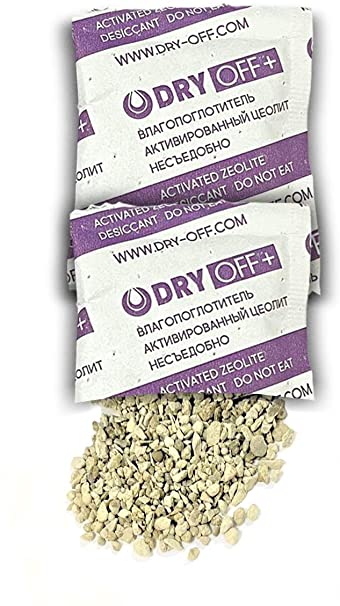
This was the first time salt was created using this method by the ancient Chinese and Romans. Buddha, in the fifth century BC, taught the world how salt should be stored and collected. The Romans used ceramic containers, called briquetage, to collect the salt. Workers scraped up the concentrated salt and washed away the impurities. They then poured the brine into shallow pans and set them on clay pillars set over a fire of peat. The workers then sold the dried and powdered salt to the New World colonists. In the New World, slaves were brought from Africa to rake salt on various islands in the West Indies, such as the Bahamas and Turks and Caicos Islands.
Many people know what table salt is, but not all people understand how sea salt works. While the main ingredient of table salt is sodium chloride, sea salt also contains several other minerals, such as magnesium, iron, calcium, and potassium. These minerals are present in trace amounts in sea sal, and they are also included in salt crystals. While it is best to use this mineral in moderation, adding a pinch to your dish will add extra nutrition and mineral nutrients.

Sea salt is the most commonly used type of salt. It comes from warm areas and is harvested by filling manmade saltwater pools with water and waiting for it vaporize. The crystals will remain behind when the water evaporates from the pool. These man-made pools are called "salt works." The process for harvesting salt requires several billions years. There are many ways to harvest salt.
The entire process of producing sea salt is very complex. The first step is the extraction of seawater. The seawater must be evaporated from the ocean. The water is left in the water for a few days to dry and to concentrate. After that, the sea sal is ready to sell. The product can then be labeled as either unrefined, or refined. The unrefined ocean salt may contain marine bacteria or trace mineral that contributes to its complex taste.
The process of harvesting salt is simple. Salt crystals are formed at the bottom of water and are almost dry. The impurities are removed by pouring off water and scraping off the top layer of the salt. This is a great way to get sea salt. It's very inexpensive and readily available. It can be found in many countries. Salt can be used for human consumption after it is harvested. It is versatile in its use.

The process of extracting salt from the sea is the same as that of extracting salt from river water. The process is, however, different for each. Some salts come from the sea while others are taken from the earth. Chemicals are used for the extraction of salt in these cases. To extract the iodine from the sea, the minerals are taken out of the sea. Salt is also processed to get rid of minerals that make it edible.
FAQ
Where can you buy high quality kitchen equipment
You can order high-quality kitchen appliances online. Many websites offer all types of kitchen equipment for purchase. However, it is important to check reviews and ratings before making any purchase of kitchen equipment. You can ask others who have the same items for their recommendations.
Are you able to cook by yourself?
Yes, it is possible to be a self-taught chef! It is something everyone enjoys, regardless of their level of cooking ability. Start cooking at home if you want to learn how to cook. Start small, such as making pancakes for breakfast and spaghetti sauce at dinner. Experimenting with new recipes is the best way to learn to cook. It is possible to make mistakes.
You can learn to cook in a matter of hours or weeks depending on your level of cooking ability. Cooking is more than following recipes. There are so many ways to prepare food.
What should a beginner chef learn?
A beginner should start cooking something easy, like pasta, rice, or soup. You can learn how to cook by looking at a cookbook or watching a YouTube video. Cooking is fun when you do it with someone else. Have a group of friends cook, or cook together.
What Are the Requirements To Be a Chef?
A bachelor's degree in culinary art is necessary to become a professional chef. In addition, you need to pass a series of tests administered by the ACF. After you have completed all requirements, you will receive a certificate confirming your qualifications.
What is the cost of a culinary school?
The cost of a culinary school depends on where you are, how much you study, and what program or course you choose. The annual tuition average is between $10,000 and $30,000 Students graduate with approximately $20,000 of debt. Some programs offer work-study, grants, scholarships and grants.
How Do I Learn About Cooking?
There are numerous cooking classes offered across the country. Many schools offer classes in baking, pastry, wine tasting, and more. If you want to learn more about cooking, you can enroll in a class at a local community college or vocational school, or attend one offered by a private institution.
Do I require any special equipment?
You don't require any special equipment to learn how to cook. The right tools can make cooking much easier. For example, you could use a knife instead of a fork to eat pasta or a whisk instead of a hand mixer to whip egg whites into stiff peaks. You can make cooking more enjoyable and easier by having the right tools.
Statistics
- under 10 Kids have been taught that there is special food just for them, and Fiese says that 10 percent of kids will throw a tantrum if they don't get the food they want. (washingtonpost.com)
- The median pay for a chef or head cook is $53,380 per year or $25.66/hour, according to the U.S. Bureau of Labor Statistics (BLS). (learnhowtobecome.org)
- On average, chefs earn $58,740 a year, according to the BLS. - learnhowtobecome.org
External Links
How To
How to make a perfect eggroll
Omelets are one of my favorite foods to eat at breakfast. But how do you create them perfectly? I've tried many different methods and recipes, but none of them seem to work! I have some tips and tricks to help you make delicious, fluffy omelets every single morning.
Before we start making omelets, let's remember that eggs are temperamental. You must get them fresh, organically, and keep them cold until you cook. You must keep them cool enough to allow the whites to form properly and the yolks to become too runny if they're not kept at the right temperature. Your omelets will look strangely colored if this happens. It is best to use room-temperature eggs if you are going to cook them right away.
Another tip is to separate your egg before adding it into the pan. You don't want the white to get mixed with the yolk, as this could cause the egg to curdle.
The egg can burn if it is placed directly on the stovetop. Instead, microwave the egg for 10 seconds before adding it to the pan. The microwave heat cooks the eggs just right without overcooking them.
Let's now talk about mixing eggs. Mixing eggs together is important. You need to beat them well. Turn the bowl upside down and grab the whisk to do this. Then, vigorously shake the bowl. This allows the air to be whipped and the egg to be mixed thoroughly.
The fun part begins - you need to pour the milk into your mixture. The first step is to pour half of the milk in the beaten eggs. Next, fold the eggs into the remaining milk. Don't worry if there are still streaks of egg visible; these streaks will disappear once you flip the omelet.
After folding the eggs, place the pan on medium heat and wait for the oil to start sizzling. When the oil is hot enough, add 1/4 cup butter to the pan. Stir it around until the butter covers the entire pan. Next, carefully open the lid and sprinkle salt into your pan. The salt will help to prevent the omelet's sticking to the pan.
Cover the pan once you have formed the omelet. Wait for the top to set. Flip the omelet by using a spatula. Cook the other half for another minute. Take out the omelet and place it in a bowl.
This recipe is best made with whole milk. However, it can also be used with skimmed milk.